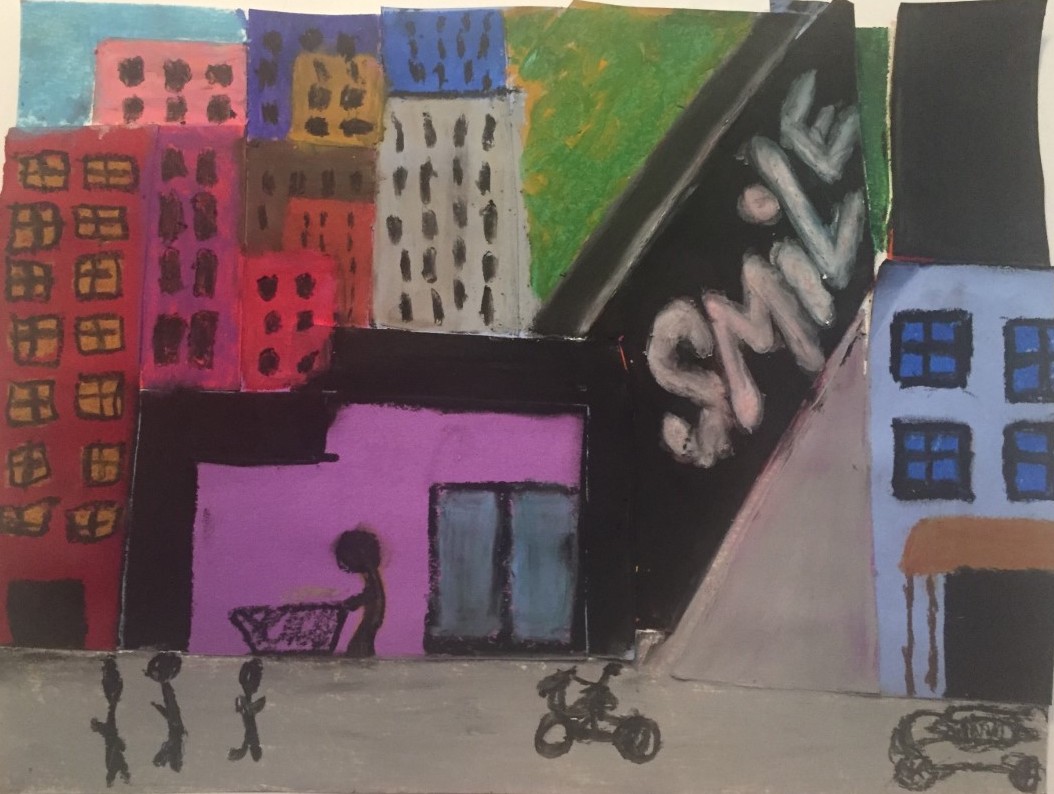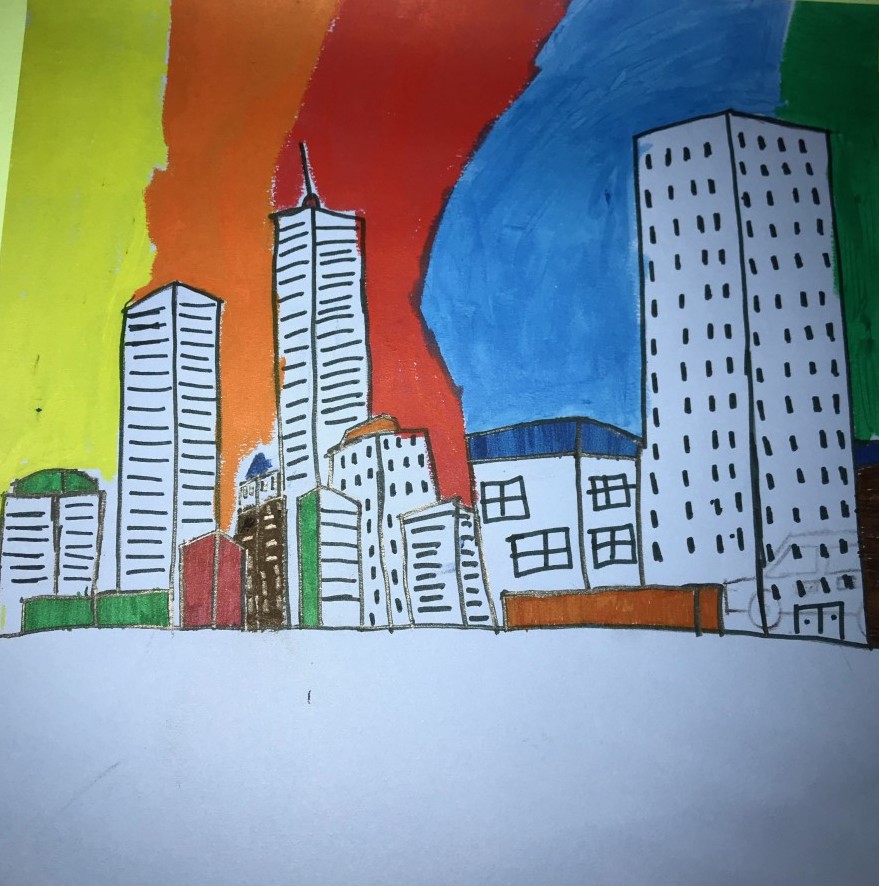A New Home (Spanish language version: Un Nuevo Hogar)
by Tania de Regil
A boy moving from New York to Mexico City and a girl moving from Mexico City to New York express their fears about leaving home to live in a new and unfamiliar place.

George Bellows, New York, 1911, oil on canvas, Collection of Mr. and Mrs. Paul Mellon, 1986.72.1
George Bellows moved to New York City to become an artist. He loved to walk around the city and observe its crowded streets and construction sites. Then he would go back to his studio and paint everything he saw: people walking down the street, horses pulling carts, skyscrapers, streetcars, and more.
LOOK
What color do you see the most? What other colors do you see?
What kinds of buildings do you see? Describe them.
What are the people doing? Make a list of their activities.
What time of day might it be? What season is it? How can you tell?
How would you describe the overall mood or feeling of this painting?
Choose one person in the painting to take a closer look at. What do you think that person might see and hear, smell or taste? How might that person feel?
READ
A New Home (Spanish language version: Un Nuevo Hogar)
by Tania de Regil
A boy moving from New York to Mexico City and a girl moving from Mexico City to New York express their fears about leaving home to live in a new and unfamiliar place.
George Bellows: Painter with a Punch!
by Robert Burleigh
This book offers a biography of the life and work of artist George Bellows.
MAKE: Create a city scene


You will need:
Close your eyes and imagine a big city. What kinds of buildings are there? What is the traffic like? What are the people doing?
Make the background of your city scene first. Cut rectangles or other building shapes out of colored paper or cardstock, and glue them to your heavyweight paper. Add details to the buildings with oil pastels. Then, add people to your scene by drawing with pastels. Try to capture the energy of the city in your work!
VOCAB BANK
Art Tales: Coloring and Cut-Outs booklet (PDF, 3.5 MB)
Art Tales for Pre-K (PDF, 7.2 MB)
Primeros Pasos En El Arte (PDF, 7.5 MB)
Primeros Pasos En El Arte: Colorear y Recortes (PDF, 3.7 MB)
An Eye for Art: George Bellows teaching resource (PDF, 9.4 MB)
Register for the Art Tales pre-K school tour
Send images of your students' projects that follow these activities - email [email protected]